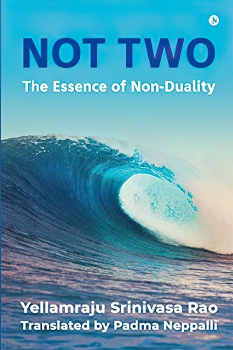Q: In your ‘Book of One’, in the section ‘Process of realization’ is written “And if enlightenment has still not dawned, go back to the listening stage and repeat as necessary!“.
I understand that ‘being ‘established’ as a jñāni means you know who you are but further śravaṇa- manana-nididhyāsana is required to ‘eliminate’ the rest of the ignorance. But then I read “Only when the desire for freedom has been lost can we appreciate that we are already free.“.
Isn’t śravaṇa- manana-nididhyāsana also based on the desire for freedom? Then doesn’t it have to be let go too?
A: I warn in the beginning of that section about ‘sloppy’ thinking and writing but I myself often verge on that in trying to write in a way that will be ‘readable’ and even sometimes amusing or entertaining. It is a risky business and sometimes fails!
There is also the problem that, as my own studies continue, I will find better ways of expressing things and be more accurate (or less confusing) in what I say. I am currently rewriting ‘Back to the Truth’ so that it is clear that I only really recommend traditional teaching and so that I do not include potentially misleading extracts unless I also point out why they may be misleading. The second edition of ‘Book of One’ was written around 12 years ago so maybe that is also in need of a new edition!
Anyway – to your question.
People only become seekers when they become dissatisfied with their lives and realize they want to find out how things ‘really’ are. This is the most important requirement – mumukśutva – the desire for liberation. This is the one desire that is ‘allowed’ (indeed necessary) in Advaita. The other required mental ‘skills’ you will have read about under sādhana catuṣṭaya sampatti. Once you have the right mental outlook, you can begin the process of acquiring Self-knowledge. The aspect that actually gives you enlightenment is śravaṇa – hearing the explanation of the scriptures from the guru. The ‘repetition’ is that, when you hear something (or read), you may need to ask questions to clarify and remove doubts. That is manana. Then you listen some more, ask more questions etc. Eventually you hear/read the final clarification and you ‘get it’. You are now a jñānī. But habitual ways of thinking and acting still linger and you have to go over the teaching again, perhaps many times, before those habits go and you have total peace of mind, fearlessness, desirelessness etc. That final stage is nididhyāsana and ‘converts’ the jñānī to a jīvanmukta. You can read all about that stage in the posts on pratibandha-s beginning
https://www.advaita-vision.org/pratibandha-s-part-1-of-6/.
I would actually delete the paragraph regarding losing the desire for freedom. Don’t know where that came from!
Hope that dispels the confusion.

